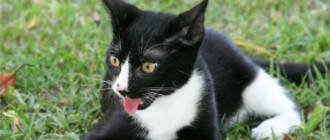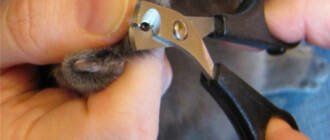If the case is not neglected, the veterinarian will prescribe lavage at home with special cleansing drops (such as Beaphar Oftal), as well as vitamin complexes to strengthen the immune system. In advanced cases, immune medications, anti-inflammatory drops or gels are prescribed.
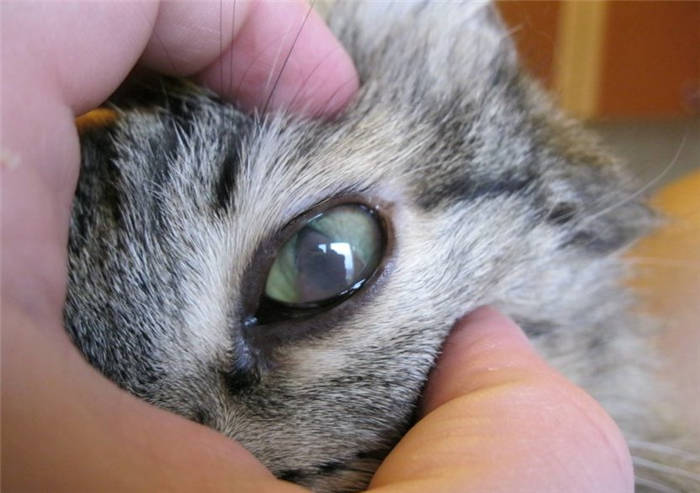
- Third eyelid in a cat: causes, symptoms and treatment
- Causes of third eyelid prolapse
- The cause of the disease
- The theory of the disease. Ways to cure the disease in cats and cats
- Methods of treatment
- Preventive measures
- Other causes of blurred cat eyes
- The cat's eyes are disappearing.
- The cat rolls his eyes
- Causes of film on the cat's eyes
- Treatment
Third eyelid in a cat: causes, symptoms and treatment
As you know, a cat's vision is six times sharper than that of us humans. But cats also have some problems with their eyes, as a result of which they can lose their sharp vision. To avoid this, the owner must know everything about the cat's eyes and their main problems, such as the third eyelid.
As we know, almost all mammals have two eyelids – the upper and lower. But many species have the so-called third eyelid (Tertia palpebra, inner eyelid, blinking web), and cats are no exception.
The third eyelid of a cat is a fold of the mucous membrane of the eyelid (conjunctiva), which is shaped like a crescent. It originates at the inner (nearest to the nose) corner of the eye, tightly adhering with one side to the cornea and the other to the inner surface of both eyelids. The side adjacent to the cornea is covered by immune tissue (lymphoid follicles).
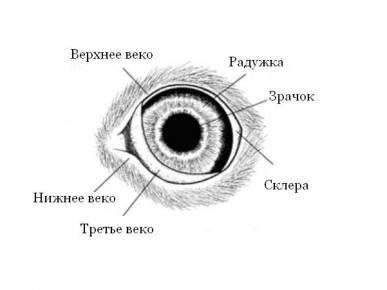
Once upon a time, the third eyelid also existed in humans (more precisely, in their ancestors). Now it has shrunk to a small rudimentary crease at the inner corner of the eye.
The periosteum of a cat's skull, at the inner corner of the eye, is attached by ligaments to a small cartilaginous plate hidden in the folds of the third eyelid. This is what helps it to keep its shape. The plate itself is put between the layers of mucous membrane of the eyelid and reminds the shape of the letter "T", its "cap" is curved in the shape of the eyeball. The third eyelid itself is attached to the "cap", and the appendages of the lacrimal ducts and the Garder's gland are attached to the "trunk".
Movement of the inner eyelid is provided by the eyelid muscles and partially by the nervous system (sympathetic). The eyelid itself is quite large (it completely covers the cornea), most of it is hidden in the eye socket. It can be pigmented (different shades of brown) or without pigment (pale pink).
Causes of third eyelid prolapse
When the cat is awake, its third eyelid is almost invisible – only the very tip may peek out from under the eyelids. Only during sleep or when the animal tilts its head, it can be clearly seen.
If the third eyelid is constantly visible, it is a reason to see a veterinarian. Such a pathology is called third eyelid prolapse. It is not a disease, but a symptom or consequence of other problems in the cat's body.
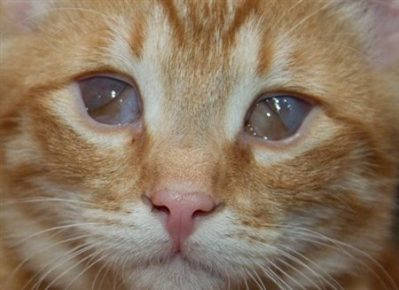
Depending on the cause, the prolapse can be treated with medication or surgery.
Remember that a healthy cat's eye cannot be covered by a film. If you notice a whitish film on your cat's eye, see your veterinarian immediately.
If a third eyelid prolapse is suspected, the following symptoms are worth looking out for:
- The cat's eye is partially or completely covered with a film.
- The cat experiences discomfort and tries to get rid of it: often rubs its muzzle with its paws, scratches its eye, blinks often and hides from light.
- The eyes become red, watery, and may even pus and produce a mucous substance.
- If the eyelid droops and the pupil is permanently constricted, it indicates a neurological problem.
- A creeping ulcer or keratitis can occur if the eye has been injured or infected. Erosion and clouding with whitish discharge also occur. Such cases can be fatal.
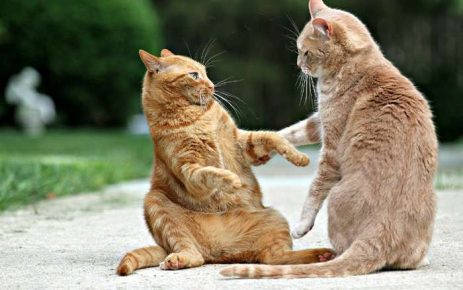
Even a minor cat fight can cause eye trauma and third eyelid prolapse
The cause of the disease
What can be associated with the appearance of such unpleasant changes in the body of your beloved pet? One possibility: Getting any foreign objects in the eyeThat are the cause of the injury or inflammation that the cat's eyelids may become swollen. Then begins the process of inflammation or appearance of a film on the inside of the eye. In addition to this, there are other causes. One of them is a disease of the pet's eyes themselves.
The disease may have infectious in nature. All this is quite dangerous, because it may cause not only a slight deterioration of the animal's vision, but even his total blindness, so we have to intervene, whether we want it or not, because this disease in no case can not be allowed to slip on its own. How to cure it and what does it take?
The theory of the disease. Ways to cure the disease in cats and cats
The first thing you need to remember before treatment is that it is important not only for your cat's or your cat's eyesight, but for the pet's whole life, because treatment in this situation can even save his or her life. This is all the more reason not to put it off, and to treat it as soon as possible.
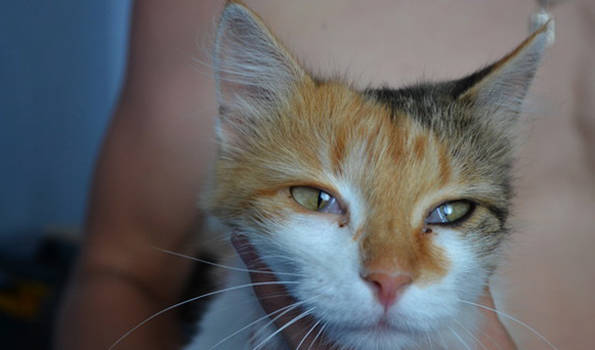
Remember that a 'third eyelid' on just one eye can be caused by a foreign object, but a film on both eyes is most likely a sign of some illness that needs serious treatment by a professional. How can this be done? Sometimes all you need to do is Dot your eyes with special dropsThen try to remove the foreign object that has got into the pet's eye.
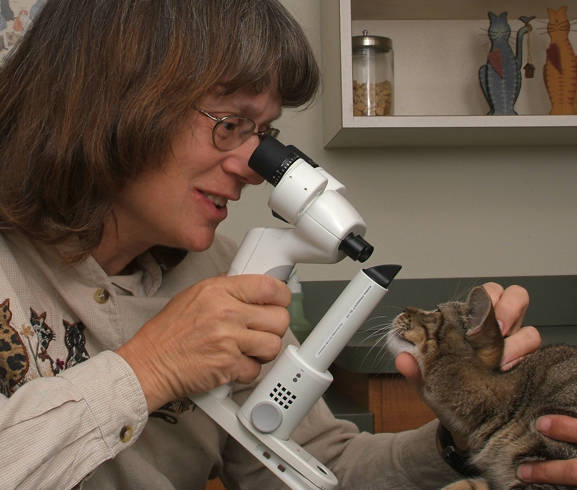
The anaesthetic effect is necessarySo that the pet is not in pain when removing the foreign object. In some other situations, it may be necessary to inject under the covering of the eye. An ophthalmoscope will also be needed to examine the eyeball. This is necessary to get a good understanding of the cause of the infection. At times, even actual surgery may be necessary.
Methods of treatment
Before treating the film that has appeared, special methods of diagnosing the cat's organs of vision are used. Most often for this purpose, a special apparatus is used – an ophthalmoscope, which allows you to examine the condition of the eyeball.
If the cat's eyes are half covered with a film, this indicates an inflammatory process of the third eyelid in the animal. The treatment regimen is selected on an individual basis by a veterinarian after examining the cat.
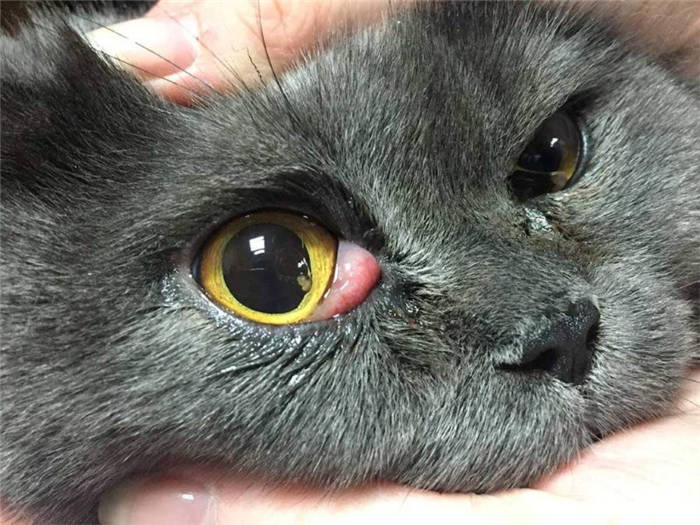
- correct preventivemeasures;
- The use of drops and ointments with the effect of anesthesia, which will help to remove discomfort and reduce the inflammatory process;
- Balancing the animal's diet, add products containing pure vitamin B12 to it;
- eye wash, tea brew, boric acid, olive oil, or plain boiled water can be used for this procedure.
With regular eye washings, festering eyes can be removed and further spreading of the inflammation can be prevented. Rinsing the eyes should be done with a cotton pad, pre-moistened with the selected solution. It is important to fix the pet as firmly as possible.
If there is severe suppuration, accompanied by constant tearing, you should use Lachrymine drops. If there is clearly marked creatitis there is a real danger of the cat developing blindness if it is not treated properly.
During the treatment period a special collar should be put on the animal to prevent it from rubbing its eyes and further infecting the visual apparatus.
During therapy, it is important to use anesthetics that will provide relief to the animal. In advanced cases, the use of injectable medications directly under the eye membrane will be necessary.
Preventive measures
Since any disease is better prevented than treated over a long period of time, you can try to protect your pet from the risk of infection or eye damage. Since a film on the visual apparatus often indicates the presence of an infectious lesion, you can treat your pet's eyes periodically with special solutions as a preventive measure.
If it is not possible to buy a solution, you can use regular decoction of chamomile. Pour 2 filter packs in 200 ml of boiling water and allow to stand. Then soak a cotton pad or tampon in the resulting decoction and wash the cat's eyes.

After completing the lavage procedure, the area around the eyes should be wiped dry with an additional dry cotton pad or swab. To avoid introducing additional external infection into your pet's eye system, you should wash your hands with soap and water or disinfectant solution before each rinse.
Another method of preventing eye disease is to review the pet's diet. It should contain only quality foods in a balanced combination. Giving cats banned products in the form of sweets or processed meat is not recommended.
The following preventive measures against cat eye diseases are important:
- Visit your veterinarian once or twice a yearOnce or twice a year you should visit the veterinarian to look for any pathological problems.
- Wash the cat's eyes withFuracilin solution .. Such a procedure should be carried out at least once every 2-3 weeks.
- Supplement the cat's diet with The cat's family is not a cat family, but a cat family with special vitamins.
- Do not forget to give your pet Worming medication as a preventative measure.
Other causes of blurred cat eyes
It happens that a cat has an eyeshadow that resembles a film. It is provoked by:
-
Corneal ulcers – appear due to trauma, infections, impaired tear fluid production or abnormal eye development. Depending on the severity, the condition requires the use of antibiotics (local anesthetics) or surgery.
The film on a pet's eyes occurs for a variety of reasons. Often the film is a protruding or prolapsed third eyelid. Its appearance is caused by trauma, congenital disorders, infections, cancer and other pathologies.
The owner can relieve the pet's condition by removing excess secretions that attract bacteria and debris and covering the affected area. Further treatment is prescribed by the veterinarian. After examining the cat and taking additional tests (blood, tissue samples) he may suggest a course of medications and, in severe cases, surgical removal of the affected organ. As a rule they try to save at least one eye.
Noticing changes in the cat's vision organs, it is better to inform the specialist immediately. If the animal has already been to the clinic, it is worth consulting with the attending physician – he can more quickly make a diagnosis based on the medical history. As with most pathologies, eye problems are often treatable in the early stages. But you need to start treatment in a timely manner.
Be sure to consult your veterinarian before starting any self-treatment or doing anything to your pet's eyes!
The cat's eyes are disappearing.
Hello.
Please tell me what is going on with my cat!
A couple of days ago I started noticing that my five-month-old cat's eyes began to roll up!!! I took her to the vet she prescribed drops CYPROVET and said to drop 4 days on 1 drop.Also banned the cat fish, sweets and especially dry food, such as kiteket!!! prescribed tablets suprastin-allergy and multivitamins. Now my pet's eyes began to roll up even more strongly (rolled to the side) counting half of the eye is gone.Activity decreased, lost weight sharply (since I stopped giving food, and other foods she does not eat), but plays and runs.
What can it be? To the vet to go on useless, such stupid doctors have to find!
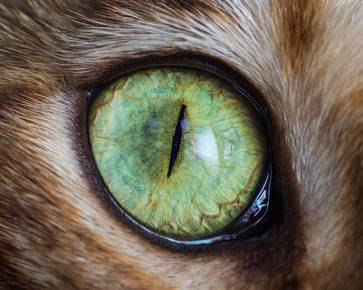
That's now made a photo as things are.
You know, it's not even about nutrition, it's about what's going on with her eyes… I can't figure it out…
And you're telling me you didn't know that kitty cat food is bad for the cat. It's your own fault. Feeding crap and then being surprised… .
You have to give pills. you won't get any foam. nonsense.
Start feeding either a good food or a balanced straight food.
Yeah, I admit my mistake. Now I blame myself more than the vet.
And what kind of food to buy … I do not even know what is good! Maybe you can tell?
And in general, said that the food to eliminate completely and go to the normal food.
L.l. The oracle (61182) if the cat was eating food, it will be difficult to transfer to natural food. you can try a food such as Pro Plan (my cat eats) Akana (60% of the meat ingredients… eaten even picky cats and small dogs) Ekanuba Bosch and even Royal Kanin and Pro pack not bad food. A straight food is of course meat, a few vegetables, some cereals (cats need more meat for normal life than dogs) dairy, 1-2 times a week, fish can be given (marine). it is difficult to balance of course. there can be both disorder and fixation in reverse.
The cat rolls his eyes
Hello, we are going to vaccinate the kitten, gave anthelmintics. Two hours later, the eyes are half covered with a white film, the cat meows pitifully and hides in a corner, sleeping. How dangerous is this reaction and what should we do? Thank you in advance.
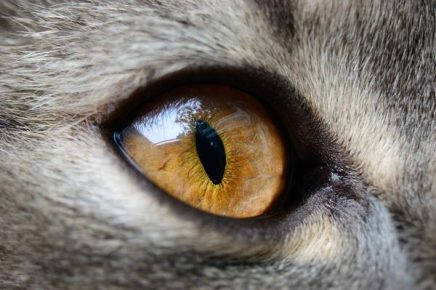
Hello! The white film on the eyes you describe is the third eyelid. The third eyelid – the blinking membrane, it can be very pronounced for various reasons, including a concomitant symptom on a level with general weakness, malaise against the background of almost any disease. You need to find out what is causing this malaise at the personal examination, but unfortunately you cannot do it over the Internet. Perhaps this is due to the stress of giving the medication, especially if the kitten breaks away, and so on. It could also be due to an overdose of medication or giving inappropriate worming medication. It is necessary to use the drug for kittens or cats depending on age and weight, always read the instructions for the drug and follow the specified dosage. If the symptoms (lethargy, oppression, etc.) do not stop, it is recommended that you take your kitten to the veterinary clinic for a face-to-face appointment. The doctor will examine the cat, measure the temperature, and based on the results of the diagnosis, will take appropriate measures, if it turns out to be necessary. I wish your cat health!
The veterinarian's consultation is for reference purposes only. A veterinarian cannot make a diagnosis based on the submitted tests but will make general recommendations. As a result of the consultation you receive, please contact your veterinarian for possible contraindications.
Causes of film on the cat's eyes
If you observe the cat's eyes closely, you may notice a clear film. During blinking or tilting of the animal's head, it "crawls" the apple and disappears when the animal's gaze is wide open. This phenomenon is normal. This is how the third eyelid or blinking membrane manifests itself.
The third eyelid is located in the inner corner of the cat's eye and moves horizontally, unlike the upper and lower eyelids. It is an important "detail" of the cat's visual apparatus, which provides hydration, cleansing and antibacterial protection of the mucous membrane of the eyeball.
"Built into" the blinking membrane, the gland produces about 30% of the tear fluid. Its functions are similar to those of car "wipers".
A clean and clear look indicates that the cat's eyes are healthy. However, the constant presence of a film on the cat's eyes should alert the owner. Perhaps the owner will not immediately notice the danger. But the cat's behavior will alert him eloquently enough to the problem.
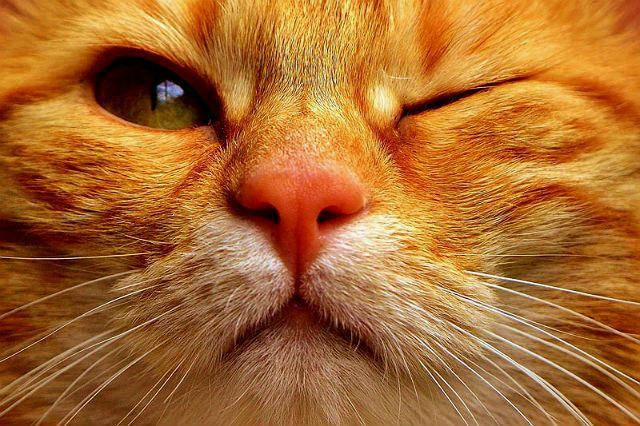
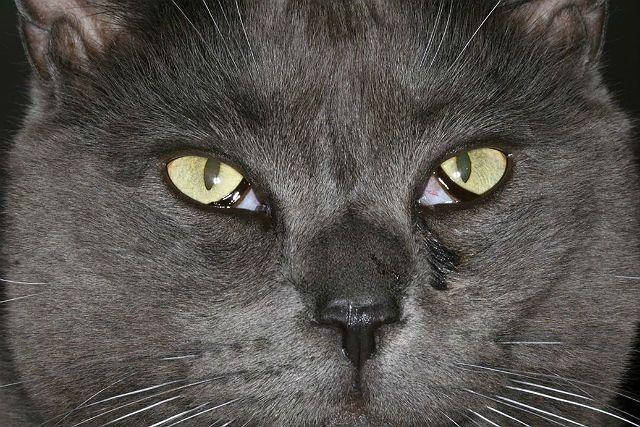
Important! If all these manifestations are added to the fever, the animal is in danger. Delay is inadmissible – you must urgently contact a veterinary clinic.
If the owner found a white film on the cat's eyes or protrusion of mucosa in the inner corner of the cat, you should immediately show the pet to a veterinarian. This condition is not an independent disease, but an alarming symptom that can be caused by various pathologies:
- If a cat's 1 eye is half-covered by a film, it is most likely mechanical damage to the cornea. An opaque connective tissue, a scar, has formed at the site of the injury. Clouding can also be caused by a foreign body (a dustpan, small insect). The cornea begins to be covered with a whitish mucus to isolate the disturbance.
- General damage to the body by endo- and ectoparasites, bacterial and fungal infections (chlamydia, mycoplasmosis). Viral infections (Calcivirosis, viral rhinotracheitis) may also cause the appearance of the film on the cat's eyes.
- The cat has a film on the eyes when allergic conjunctivitis develops.
- Weakening of the immune system, disorders of internal organs.
- The eyes of a kitten or adult cat may swim in the film when the hormonal and nervous system is disturbed.
- Often, the eyelids of a cat may swell due to head trauma.
- Genetic predisposition. Small Persian and British breed kittens often have a third eyelid loss. This may be due to congenital weakness of the ligaments that are responsible for the movement of the eyelids. With age and proper care, the condition can improve considerably.
- Atrophy of the visual organ.
Treatment
Without proper treatment, the cat's vision can be severely affected. Even the onset of complete blindness is possible. As the causes of third eyelid protrusion are quite diverse, treatment is determined by a specialist in accordance with the diagnosed disease.
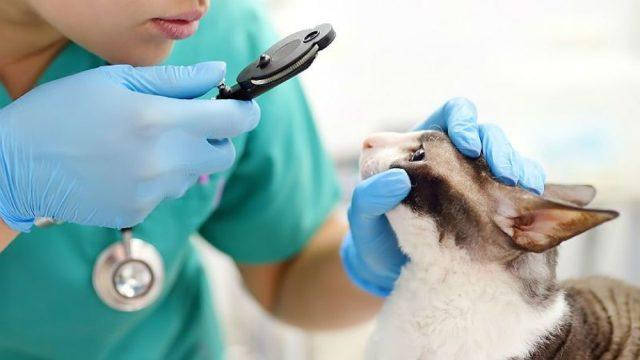
Important: Before the visit to the doctor, it is undesirable to use any medication at random. Even if they bring temporary relief to the cat, the real picture of the disease may be distorted. Not only that, the incompetence of the domestic healer may harm the animal.
The treatment strategy is chosen by the veterinarian depending on the disease detected:
- If the cornea is mechanically damaged or a foreign body is found, the wound is washed and disinfected. If necessary, surgical intervention is not excluded. All procedures are performed under local anesthesia.
- In case of infectious infection, a complex treatment is prescribed. In this case, the cat is prescribed antibiotics, antiviral or antifungal drugs. If necessary, symptomatic therapy is carried out: antipyretics for fever, vitamin complexes for exhaustion, immunomodulators.
- In case of allergic reactions, the doctor will advise to get rid of the causes and products that cause unwanted reaction of the pet's body, and prescribe antihistamines.
- If the cause of the film on the cat's eyes will be inflammatory processes in the internal organs, the treatment will be the root cause – the diseased organ. Appointment of adequate therapy and therapeutic food.
The owner of the pet must carefully follow all the doctor's instructions and continue treatment for the prescribed period, even after the symptoms have disappeared. Untreated disease may return, which threatens severe complications.



